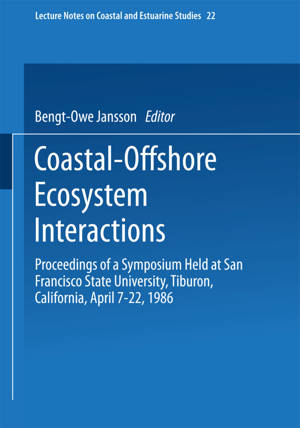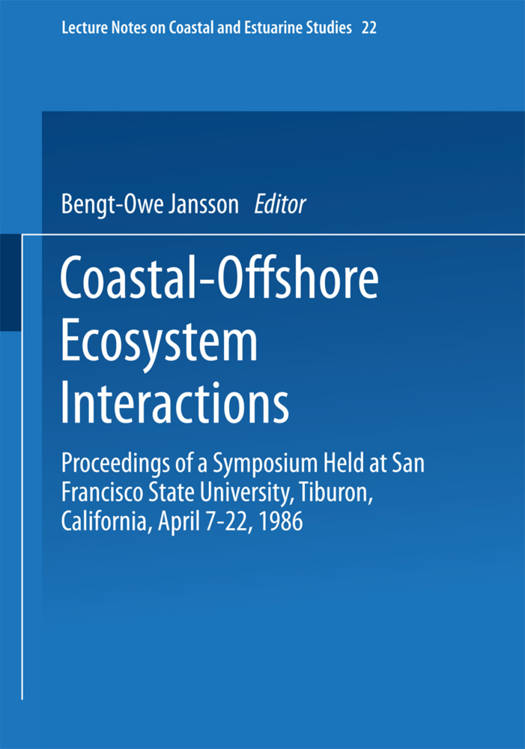
- Retrait gratuit dans votre magasin Club
- 7.000.000 titres dans notre catalogue
- Payer en toute sécurité
- Toujours un magasin près de chez vous
- Retrait gratuit dans votre magasin Club
- 7.000.000 titres dans notre catalogue
- Payer en toute sécurité
- Toujours un magasin près de chez vous
Coastal-Offshore Ecosystem Interactions
Proceedings of a Symposium Sponsored by Scor, Unesco, San Francisco Society, California Sea Grant Program, and U.S. Dept. of Interior, Mineral Management Service Held at San Francisco State University, Tiburon, California, April 7-22, 1986
52,95 €
+ 105 points
Description
stable isotope ratios act as naturally-occurring tracers for organic matter, making possible, under certain conditions, the quantification of coastal-offshore exchanges. In general, organic matter has isotope ratios characteristic of its origin (e. g. plants with different modes of photosynthesis and different growth conditions, anthropogenic compounds). These ratios are maintained as the organic matter moves through the biosphere and geosphere. A mixture of organic matter from two sources has isotope ratios intermediate between those of the two sources, in proportion to the fraction of material from each source. Isotope ratios are one of the few methods which can trace organic matter as it moves through natural ecosystems. Ratios can be measured on both the total organic matter and on particular chemical fractions or compounds. When used on organisms, isotope ratios provide information of organic matter actually assimilated into body tissues, not just material ingested. As with all tools, this method has certain limitations which must be borne in mind when interpreting its results. Firstly, specific environmental conditions must be met. This generally means an ecosystem with a limited and known number of sources of organic matter having different isotope ratios. Two sources with different isotope ratios are ideal; additional sources with other isotope ratios complicate interpretation. Secondly, the difference in isotope ratios of the two sources should be large compared with analytical variability. Thirdly, the ratios within each source should vary as little as possible.
Spécifications
Parties prenantes
- Editeur:
Contenu
- Nombre de pages :
- 367
- Langue:
- Anglais
- Collection :
- Tome:
- n° 22
Caractéristiques
- EAN:
- 9783540190516
- Date de parution :
- 09-03-88
- Format:
- Livre broché
- Format numérique:
- Trade paperback (VS)
- Dimensions :
- 178 mm x 254 mm
- Poids :
- 662 g






